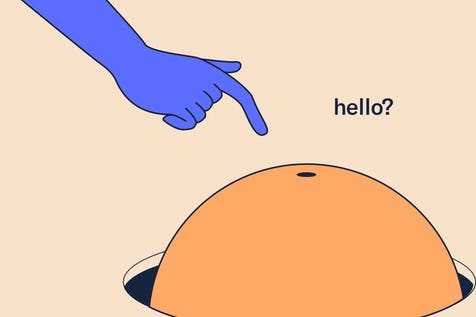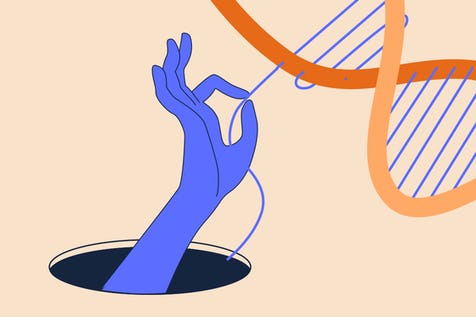The Launch
2020 was geared up to be our best year yet. We had spent the last 3 years developing a complex product that included hardware, software, and a diagnostic test, and finally in 2020 we were going to place it in women’s hands. It was an exciting and yet busy time. Since raising our Series A in late 2019, we had spent the last quarter of the year setting up and fine-tuning production lines, finalizing certain regulatory requirements, growing the team, ramping up our final user testing and implementing final features before launch.
At our Christmas party in December 2019 I remember clearly that among the ‘older’ members of the team there was excitement, there was pride and yet there was a lot of tiredness. 2019 had been a full-on year with little holidays and big changes. The ‘newbies’ of the team brought an air of lightness and positive anticipation, it was so refreshing.
So after a deserved break we kicked off 2020 on a strong note. We had a clear strategy and overall alignment and we really were outputting very high productivity all through January. Just like any hardware startup, we started ordering components from China early in the year to anticipate delays due to Chinese New Year. Our launch was planned for April 2020 but we needed to make sure Chinese New Year would not be a contributor of delay.
We started hearing of lockdowns and limited travel from our Chinese Suppliers early in the year, earlier than many other startups. But there was optimism coming through their messages too. The main objective was to get the parts to use before Chinese New Year - the lockdown was not really treated as something to plan around on those early days.
We kept traveling to our production line sites, we kept pushing and building, we kept going at full speed all the way until the last Friday before the German government restricted travel and ordered the first lockdown.
We actually kept going at what felt like full speed but in a remote setting, all the way through to our launch and we shipped our first products to customers in early April 2020.
And here we are 9 months later, a time it takes for a full pregnancy to be considered ‘full term’. Here is my reflection of what it has been like to launch a completely new product during a world pandemic.
#1: Postpone or go ahead?
I have been seeing a series of articles circulating since roughly August last year titled ‘Should I launch during COVID?’. This was never a question for us. See, in the early days of COVID, we did not have clarity of how long this situation would last. And although we all were urged and did our duty of adjusting budgets and planning for a longer period of crisis, unless you were a business in the area of events, travel or hospitality, the sentiment was ‘let’s keep going’. My sentiment was; “we have customers on our pre-order list - definitely keep going!”
Not launching was never an option for us.
Having a ‘controlled’ launch though was very much what happened. What on earth is a ‘controlled launch’?
Controlled launch for us meant; a) bringing our marketing spent to an absolute minimum, b) controlling our inventory to ensure we did not have too much stock, c) focusing on own-produced content and organic traffic to communicate our launch and d) all in all not focusing on sales targets but focusing on reaching our first customers and delighting them with our product. Some of these ‘controls’ were our reaction to the uncertainty unfolding in front of us and some of them were almost forced on us because of the way other companies navigated this same uncertainty. I remember speaking to one PR agency for some coverage of our launch around a month into the first lockdown of Europe and they were struggling to estimate when journalists would write about anything else apart from COVID. They hesitated not because they did not want the business but because they were also navigating a completely new situation on their side too. I remember that conversation so vividly because it was completely opposite to my sentiment of ‘let’s keep going’ but also because I started noticing a pattern of hesitation across the full ecosystem right after that.
#2: Hesitation is death
Hesitation is death is one of my guiding mottos. I do not respond well to hesitation and also truly believe that one of the core lessons every startup team has to learn and assimilate in their culture is the ability to try new things, fail and try again. It is a motto I have used in our team meetings, in our scrum settings and one I have lived by since the very early days.
By advocating that hesitation is death, I was never suggesting recklessness and a ‘break it’ mentality.
Quite the contrary. What ‘hesitation is death’ meant for me was a focus to look at opportunities and solutions around problems. To bring options to the table, to discuss them and as a team decide on a direction to take and then to not hesitate - but fully commit to jump in.
COVID certainly changed that. I started feeling from suppliers - but also internally that the language we used slowly changed. Our productivity did not change and yet the language moved towards “Do we consider this?” “Shall we do this?” “Do we invest in this? “ “Do I make this hire?”. It did not take long for the internal dialogue to move from ‘I think what we need is XYZ’, which would in the past spark a discussion, to ‘Are we open to consider…?”.
#3: All your resilience is within the team
As the novelty of the lockdown started fading away and fatigue started to set in, the language of hesitation became more and more apparent.
When placing a brand new product in the market and having so many unknowns to navigate, pandemic aside, it is critical to stay on the creative ideas and solutions side rather than hesitation. By early summer 2020, it was important to ensure we did not go down that path.
We turned to innovation and established what we called ‘inne-vations’ as a company wide OKRs. It was an opportunity to think outside the box, outside our current targets, even beyond the pandemic. It was intentionally creating space for the team to come together under ‘new ideas’ of where we could take the product and the company and to explore together in our remote Zoom interactions what was happening in the femtech market, in the female health market, but also in us as a team.
Though the workload of stabilizing and improving a newly launched product always took priority and the majority of our time, it is fair to say that inne-vations brought back that excitement and anticipation that we had all been missing during the lockdown phase. Ultimately, in a pandemic situation people want good news and having the inne-vation projects to look forward to did exactly that. Inne-vations accumulated into an internal ‘pitch competition’ which was a great success both in terms of content but also in terms of team bonding, even if virtual.
Ultimately, we had managed to reverse the language of hesitation into a language of opportunities.
#4: Harder competition online
By May 2020 everyone seemed to be talking about the advantage of having an online market channel and how that was a game changer in COVID times. While online sales were certainly at a clear advantage during COVID and in some cases a deciding factor of whether it would survive pandemic or not, it was equally true that within the space of a couple of months pretty much all companies were navigating towards some kind of online sales.
What it meant for us as a new product was that we were now competing for the same online target group with a much larger number of products that we would have had a few months before. As a result, marketing campaigns became more expensive and fine-tuning target audiences less straightforward.
While there was a lot of talk around the potential of change in consumer habits due to the pandemic, there was a whole other area of uncertainty being created for new products such as ourselves. The uncertainty on how to best reach your desired target audience online to let them know that you have launched and what you offer and keep them engaged. As time progressed in 2020, it became clearer that we were competing for the same target audience’s attention not only with what we knew of as ‘competition’ but a plethora of products that would otherwise be mainly promoted offline.
Experimentation and iteration of messaging and positioning was key for us to navigate this challenge. While there are still plenty of ‘experiments’ and iterations we need to try, what has been in my view, a great way to make our message heard to the right target audience with the real ‘pain point’ has been both online and offline PR especially when coupled with the power of testimonials.
What's next?
It is now apparent that it will take much longer than initially thought to return to a ‘normality’ or better a new ‘normality’ despite the recent successes in the COVID vaccination field. As we continue on our inne journey in 2021 and navigate new learnings daily, our intention is to be even more laser focused on customer delight and building predictability and repeatability across our business. And while I mourn all the lives that COVID took in the last year as well as livelihoods it impacted negatively, I am equally grateful to have been able to share the rollercoaster of 2020 with the amazing colleagues and investors of inne.








